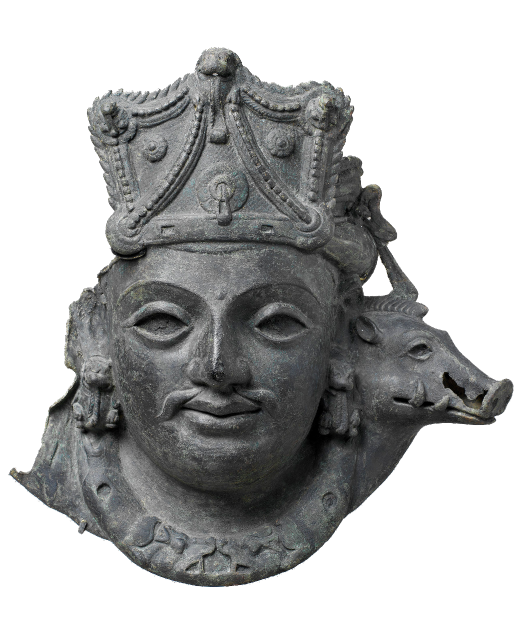PERSPECTIVES
The Murals of Cheppad: Early Christian Art in India
“For the ancient Churches of these Christians, built many years before the arrival of Portuguese in India, were all of them adorned with these (Saint Thomas Crosses), both in painting and sculpture.”
— Francisco de Gouvea
Gouvea, a 16th century Portuguese chronicler, wrote these words about Kerala’s ancient Christian community in the Jornada do Arcebispo de Goa Dom Frei Aleixo de Menezes (The Journey of the Archbishop of Goa Dom Frei Aleixo de Menezes). He was documenting the Archbishop’s tour of the region before Menezes presided over the Synod of Diamper in 1599. It was this controversial council that brought the St Thomas Christians, also known as the Nasrani, under the authority of the Roman Pope.
Whether Gouvea travelled with the Archbishop, or wrote based on the bishop’s notes, is a separate matter and worthy of discussion. However, the book is unequivocal proof of a stunning fact — long before European missionaries came to India with their Western outlook on Christian art and aesthetics, the churches of Kerala already had a thriving and rich indigenous artistic tradition.
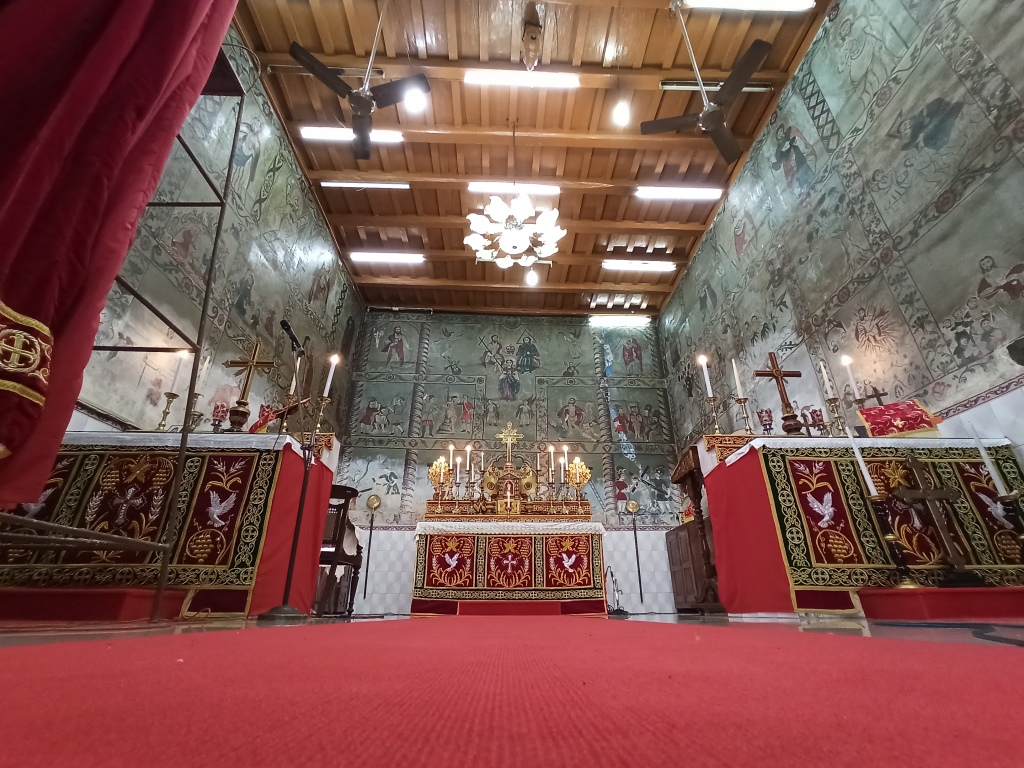
But what did this art look like? How did it evolve in the cultural crucible of the Malabar Coast, free from Western influence? The St George Orthodox Church in Cheppad holds the clue. Here, on the three walls of the holy sanctum, lies one of the most significant and overlooked treasures of Indian art history — the Cheppad Murals.
Legacy on the Walls
Believed to be from the 13th century, the Cheppad Murals are the oldest surviving church murals in the region. This breathtaking panorama unfolds across 48 panels, with the left and right walls comprising paintings drawn in three layers. The top layer of both walls represents the apostles. The central image in the central wall, drawn with great importance, is the Ascension of St Mary, which is also seen in other mural paintings in Kerala churches. An extensive biblical narrative covers the walls — from Old Testament scenes of Adam and Eve and Noah’s Ark to the life of Christ, meticulously detailed from His birth to His Ascension.
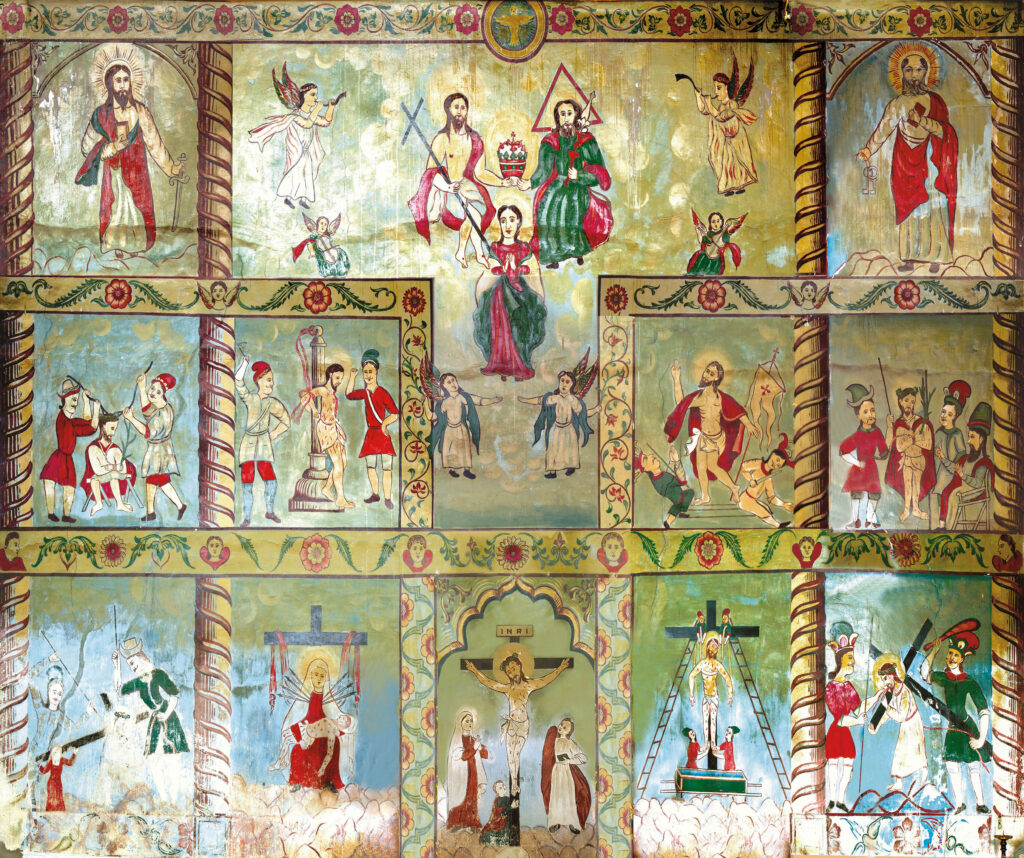
Above them all, the apostles are depicted, each with a feature tied to their story. In Christian art, apostles or saints are often identified through distinctive symbols, and the Cheppad murals follow this convention. St Paul is shown with a sword, alluding to his martyrdom by beheading. St Peter holds a key, a reference to early Christian tradition portraying him as the keeper of heaven’s gates. St Thomas carries a carpenter’s tool, linked to the tradition that he came to India in the guise of a carpenter. St Andrew appears with an X-shaped cross, recalling the form of the cross on which he was believed to have been martyred.
But, why decorate a church so elaborately? One account from Gouvea’s book offers a clue. When he asked a local Christian about his faith, the man mentioned a painting, explaining it was “how they remembered God” — as the old man, the young man, and the pastor. (The word “pastor,” perhaps is the result of a misinterpretation by Gouvea, but the statement points directly to the community’s belief in the Christian concept of the Trinity). Indeed, a representation of the Trinity is also part of the Cheppad murals, where the Father is depicted as an old man with a triangular halo, a young man with a circular one representing the Son, while the Holy Spirit is a dove.
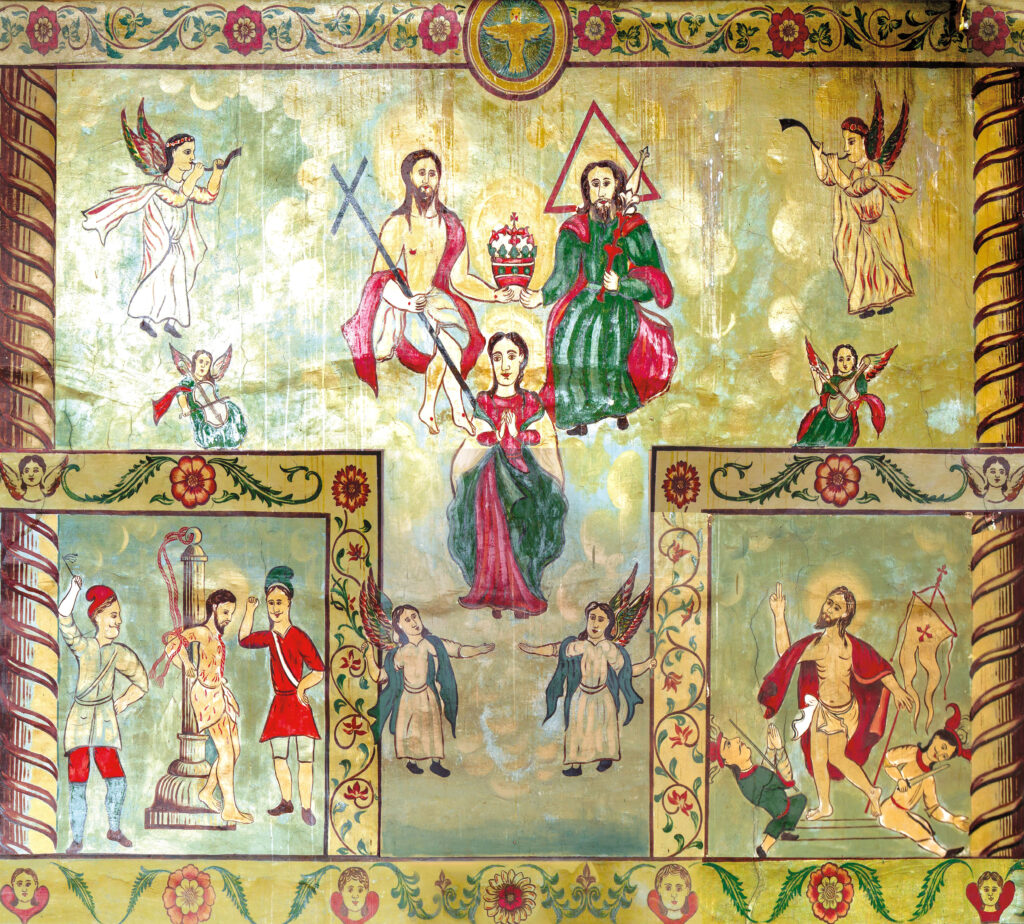
This visual theology lesson served a primary function — it was a communal Bible for the people. As St Gregory the Dialogist (Pope of Rome, c. 590–604) once wrote, “For what writing presents to readers, this a picture presents to the unlearned who behold, since in it even the ignorant see what they ought to follow; in it the illiterate read.”
This powerful insight not only affirmed the value of sacred imagery in the Latin West but also resonates with how visual narratives functioned in Kerala’s churches — as a form of theological instruction accessible to all, regardless of literacy. But to see the murals as mere teaching tools is to miss their deeper purpose. Art is also a mirror, reflecting a community’s identity. The St Thomas Christians of Kerala were deeply integrated with the region’s local culture. Their church architecture borrowed from temple designs, and their customs blended with the cultural traditions of Kerala. Their art was no different. In the nativity scene at Cheppad, figures are depicted in local attire — a conscious choice to make the sacred story familiar.
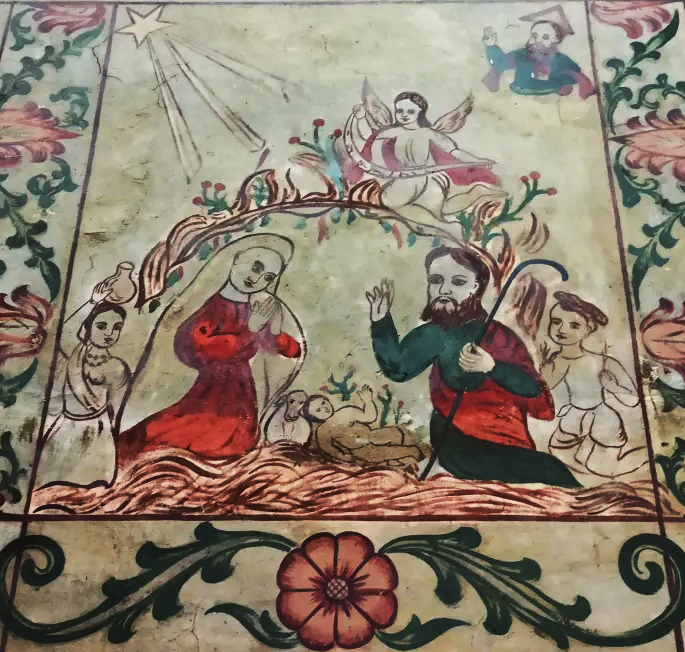
Interestingly, this blending of Christian theology with native aesthetics was not unique to Kerala. It appeared all along the route where the Nestorians preached and worked. Also known as the Church of the East, the Nestorian Church is a branch of Eastern Christianity that originated in the Sasanian Empire (modern-day Iran and Iraq) during the fifth century. Records suggest that the St Thomas Christians were in active communion with the Nestorian Church, and all liturgical assistance was provided by them until the Portuguese interfered. A striking parallel can be found in Nestorian Christian art from China of the same period, where sacred symbols were reimagined through Buddhist and Taoist visual idioms. These were not mere adaptations — they reflected a deeply rooted theological identity shaped by place and time.
Stylistically, the murals are a fascinating hybrid. Vibrant reds and greens fill bold, black outlines, echoing the aesthetics of Indian folk painting, as seen in the charmingly direct depiction of Noah’s Ark. Yet this is blended with a distinct West Asian aesthetic of the 12th and 13th century, inherited from the Syriac tradition. The figures are often rigid and frontal, with large, wide-open, almond-shaped eyes that gaze into a timeless, sacred space. Christian works of art often reflect doctrinal debates. In the Cheppad murals, certain prominent Nestorian beliefs are clearly evident, such as the depiction of Christ’s suffering and His human form alongside His divinity, echoing the doctrine of Christ as both fully man and fully God. Yet, assigning the entire mural to a single tradition is difficult, as its many themes display a blend of influences. This likely points to collaboration or contact between different Christian traditions.
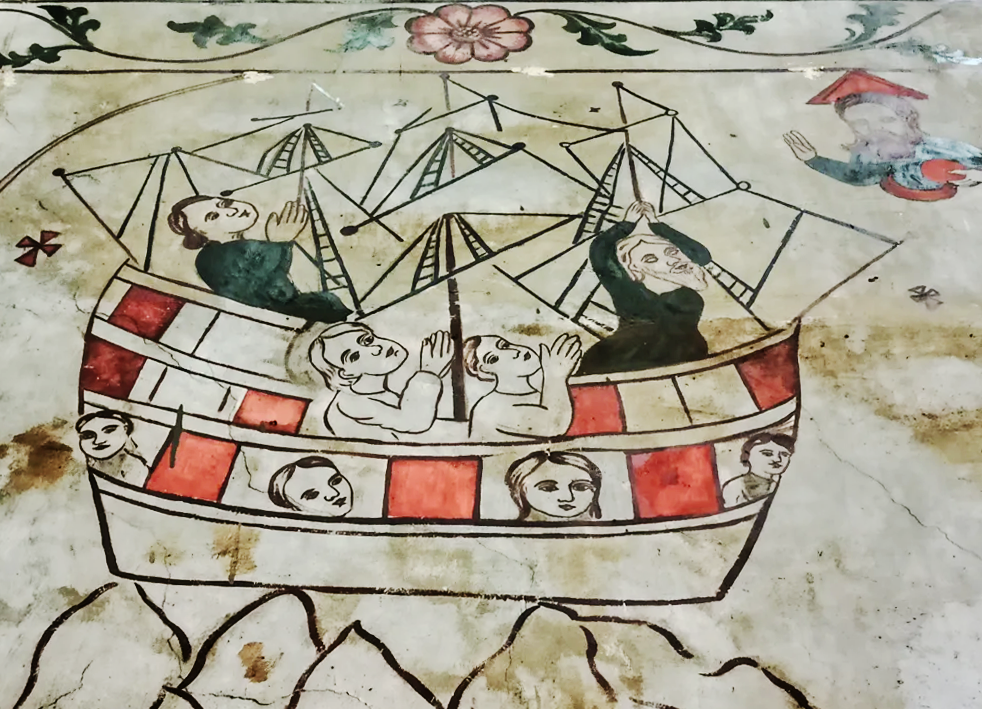
Located near the historic port of Kollam, the Cheppad Church may have served as a convergence point for such exchanges. The ordered arrangement of the murals suggests they were painted in a single phase rather than across different periods. Early Portuguese records and travel accounts mention bishops and priests from Armenian, Babylonian, Persian, and Syrian backgrounds in the region, supporting the possibility of diverse liturgical and theological inputs.
In this light, the role of these theological guides in conjunction with the mural artist’s interpretations and the patron’s expectations are central to interpreting the nuances of the murals. Together, they influenced not only what was painted, but how the community’s beliefs, values, and local traditions were expressed on the walls. At the same time, a detailed study of the Cheppad murals’ themes can uncover hidden collaborations and offer deeper insights into the layered history of early Christianity in the region.
Between Survival and Silence
This vibrant, independent tradition faced an existential threat with the arrival of the Portuguese. The Synod of Diamper in 1599 sought to “purify” the local church of its “Nestorian errors,” a campaign that was not just theological but also artistic. Gouvea himself records that Archbishop Menezes visited the Cheppad Church and ordered archives and records to be burnt. While the murals are not specifically mentioned as having been destroyed, they survived in an atmosphere of cultural purge.
Centuries later, the murals faced a different kind of threat: a well-intentioned but unscientific intervention. During a church renovation in 1952, the sanctum was preserved, but a local painter was commissioned to “correct” the artworks. The techniques used are undocumented, but experts like researcher Gibin Varghese suggest the murals were likely far more colorful originally, with many details potentially lost or painted over during this process.
Even today, the neglect continues. A protective layer, applied by the Archaeological Survey of India (ASI) years ago, has faded, leaving much of the original work exposed to the elements. Dampness, flaking paint, and the slow fading with time, are taking their toll. There has been no modern, scientific restoration effort to save them.
Ancient Christian communities across the world developing their own distinct artistic traditions is a well-covered aspect in Religious Studies and Art History. But the story of Indian Christian art is often treated as a blank slate before the colonial era. The murals of Cheppad are the powerful, vivid rebuttal to that silence. They are a vital chapter in India’s multicultural story, proving that an ancient community forged its own unique visual language to express its faith.
To allow them to fade away would not just be an artistic loss, but an act of historical amnesia. Renewed attention and urgent conservation are needed to ensure this fading testament can continue to tell its remarkable story for generations to come.
Sneha Mary Mathew is a research scholar at BSIP, Lucknow. She is interested in the socio-cultural history of Christians in Kerala and enjoys capturing and sharing people’s stories.
